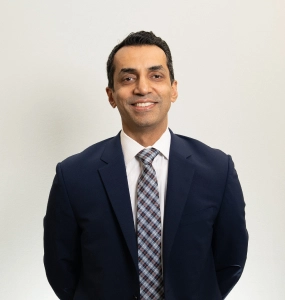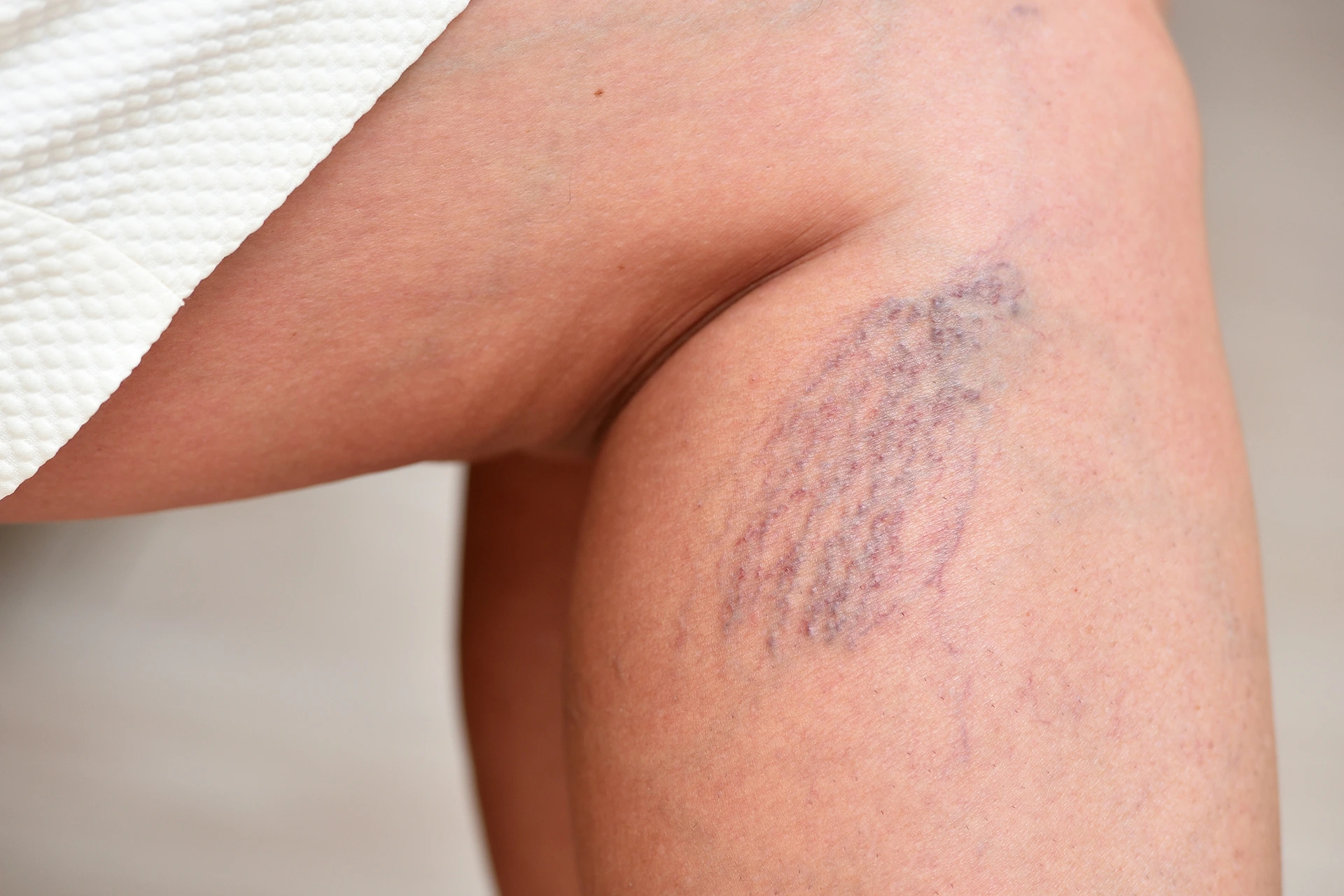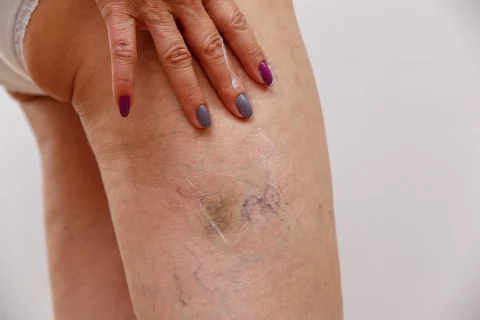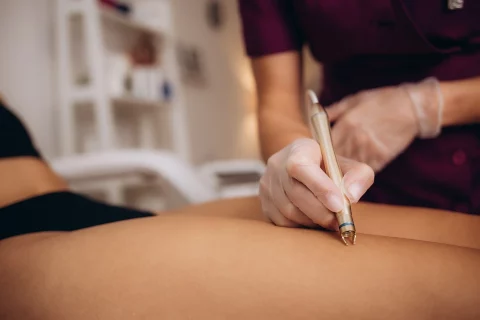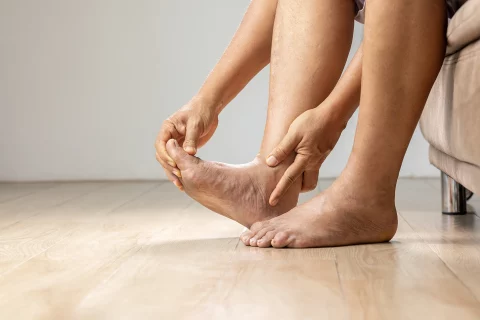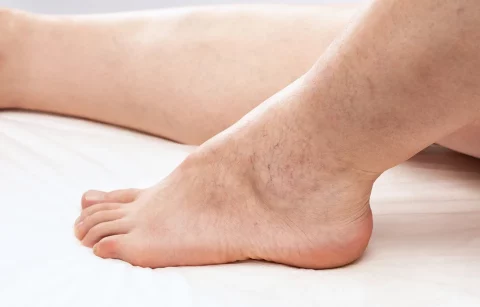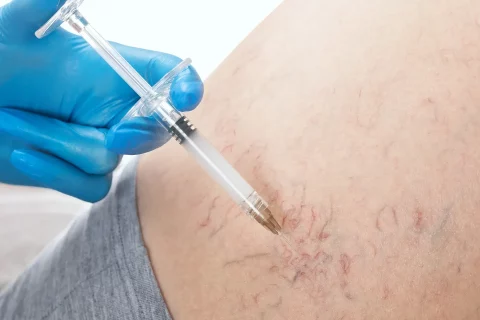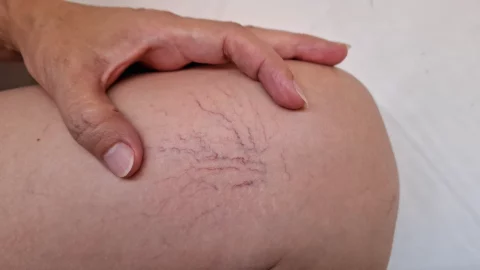Don’t pop or poke spider veins at home using a needle or pin, as this carries significant risks of infection, scarring, and potentially worsening the condition. Spider veins are best treated under the supervision of a qualified medical provider.
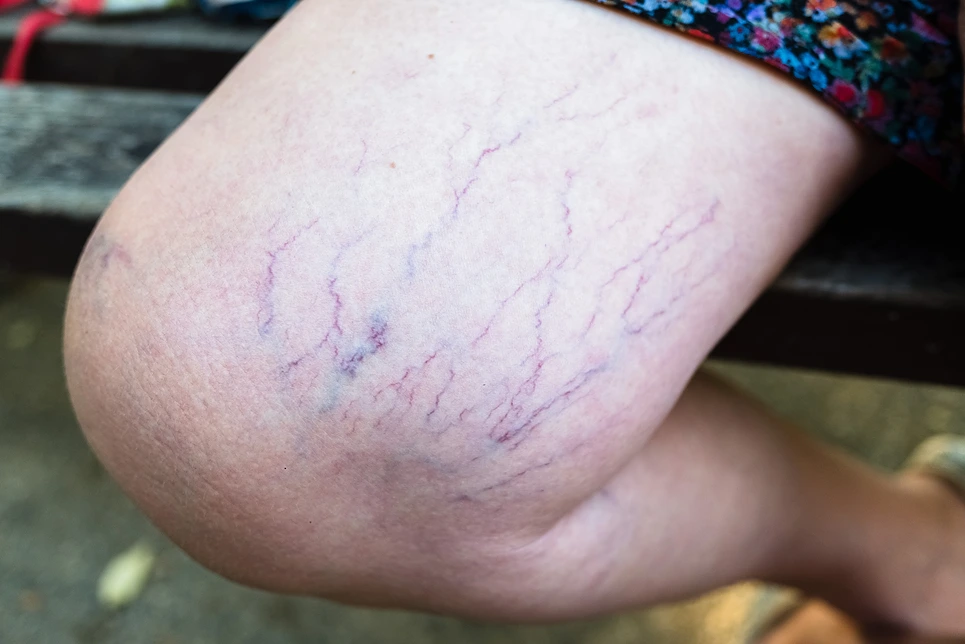
Spider veins are a common cosmetic concern for many people. These small, enlarged blood vessels can appear on the legs and face as weblike clusters of red, blue, or purple veins. While usually harmless, their appearance can cause self-consciousness about bare legs or cheeks. This leads some to wonder if simply poking the veins with a needle could make them disappear. However, attempting to treat spider veins on your own this way is never advisable.
What are spider veins, and why do they appear?
Spider veins, also called telangiectasias, are tiny veins that lie close to the surface of the skin. They have a web or branch-like shape, which is how they got the nickname “spider veins”. While similar to varicose veins, spider veins are smaller, measuring only 1 to 3 millimeters wide.
Spider veins frequently appear on the legs, especially around the thighs, behind the knees, and on the calves. They can also develop on the face, especially around the nose and cheeks. What causes these small veins to form? There are a few contributing factors:
- Hormonal changes – Spider veins often first appear during puberty, pregnancy, and menopause when hormones like estrogen and progesterone fluctuate. This affects vein walls.
- Genetics – Spider veins can run in families. If your parents had them, you’re statistically more likely to get them too.
- Increasing age – As we get older, our vein valves can weaken and not function as well to circulate blood back to the heart properly against gravity. Spider veins may develop.
- Sun exposure – Years of unprotected UV damage from the sun’s rays can weaken blood vessels. The face is especially vulnerable.
- Weight gain and obesity – Extra body weight puts added pressure on leg veins and can contribute to spider veins forming.
While annoying cosmetically, spider veins themselves are harmless and typically don’t cause any symptoms. But what should and shouldn’t you do about them?
Is it safe to poke spider veins with a needle?
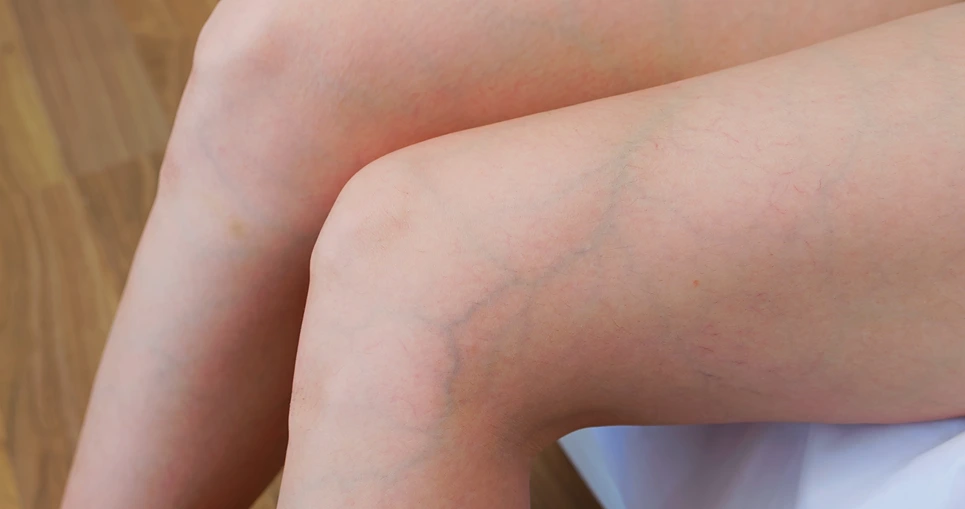
When bothered by the look of spider veins on their legs or face, some people may contemplate simply puncturing them with a sterile needle or pin. This seems like it could rupture the vein and make it fade away. However, this is never recommended for several critical reasons:
- Infection risk – Using anything that punctures the skin carries the risk of infection. If the needle or pin is not fully sterilized, bacteria can enter the puncture wound and cause problems.
- Bleeding – Poking veins can lead to bleeding under the skin, called a hematoma. This appears as bruising and can be disfiguring.
- Scarring – If the skin is poked repeatedly, it can lead to permanent scarring or thick, raised scar tissue called keloids.
- Damaging veins – Puncturing veins haphazardly may damage them and the surrounding blood vessels, requiring corrective treatment.
- No lasting improvement – Ultimately, poking spider veins simply causes momentary injury to a few veins. It does not resolve the underlying cause or treat the remaining spider veins.
So while it may seem like a quick DIY solution, attempting to pierce spider veins yourself is never medically recommended. At best, it will likely just cause temporary pain, bruising, or bleeding with no lasting improvement. At worst, it can lead to infection, scarring, or a more serious vascular injury.
What are the medical treatments for spider veins?
Instead of DIY poking, the safest and most effective way to treat bothersome spider veins is through medical procedures administered by vein specialists and other qualified professionals. The two main medical treatments are:
- Sclerotherapy – The most common procedure, this involves injecting the spider veins directly with a special sclerosing solution. This causes the veins to gradually fade and collapse. Multiple sessions are usually needed for best results.
- Laser therapy – Using focused light energy, lasers can selectively target spider veins without damaging the surrounding skin. The heat obliterates the unwanted veins. Several treatments spaced weeks apart are typical.
Both medical procedures require training to perform correctly on the intricate venous networks under the skin. When done properly, sclerotherapy and laser therapy can safely eliminate spider veins with minimal side effects like temporary redness or swelling at the injection sites. Results continue to improve over several weeks as treated veins heal and fade.
Can poking spider veins make the condition worse?
Rather than making spider veins disappear, attempting to poke and rupture the veins on your own can actually worsen the problem. This can happen in a few ways:
- Inflammation – The trauma causes inflammation in the area surrounding the injury. This can result in redness, pain, swelling, and irritation of the skin.
- New vein formation – Attempting to damage existing veins can impair healthy circulation, prompting the body to compensate by producing new spider veins.
- Infection – If the skin is broken with an unsterilized needle, bacteria can enter and develop into an infection. This requires antibiotic treatment.
- Scarring – Repeated poking and skin injury can lead to scars or thickened tissue that is even more unsightly than the original spider veins.
- Vein spread – Existing spider veins may become larger or spread into web-like clusters as a result of inflammation.
So not only is poking ineffective for treating spider veins, but it can actively worsen their appearance. Any vein damage or trauma caused raises the chances of developing more pronounced spider veins and related skin reactions.
Why do some people think poking spider veins might work?
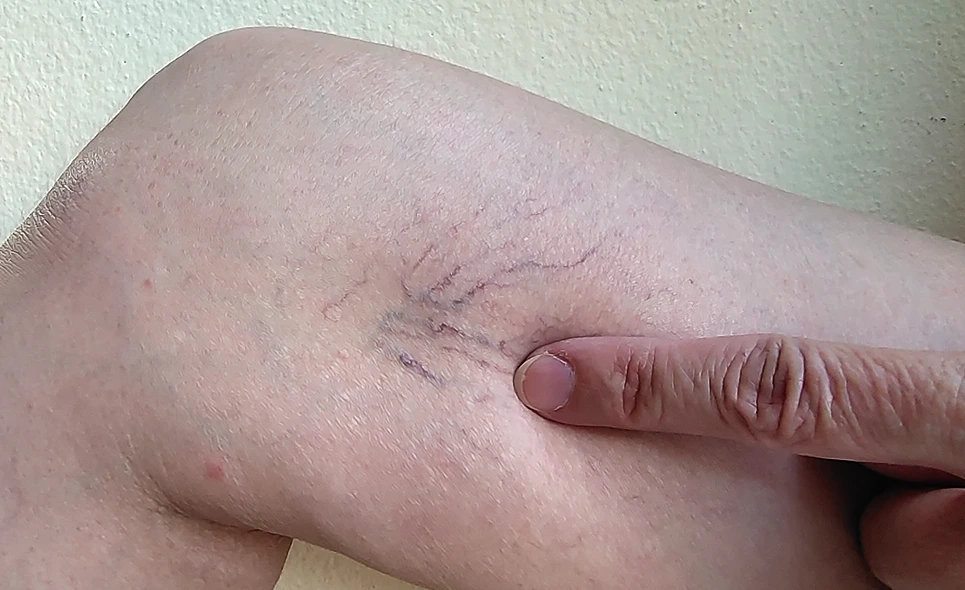
With all the risks, why would someone attempt to poke and rupture their own spider veins instead of pursuing real medical treatment? There are a few reasons this misguided idea persists:
- Impatience – People want immediate results and think poking veins might provide quick improvement versus waiting weeks for professional treatments.
- Cost – Professional spider vein procedures are often not covered by insurance and can be expensive out of pocket. Poking seems like a free, DIY alternative.
- Minimizing severity – Some assume because spider veins are small and harmless, it’s no big deal to poke and attempt to eliminate them on one’s own.
- Lack of understanding – Many are simply misinformed about human vascular anatomy. They do not realize poking veins unprofessionally can worsen issues.
- Desperation – When extremely self-conscious about spider veins, people can become desperate and willing to try unwise DIY methods.
While the logic is somewhat understandable, none of these are good reasons to try poking your own veins. At best, it will be ineffective. At worst, dangerous vascular complications can occur.
What should you do if you’re concerned about spider veins?
If bothersome spider veins are making you self-conscious and impacting your confidence in your appearance, don’t attempt amateur treatment on your own. Instead:
- Consult a vein specialist – Make an appointment with a properly accredited vascular specialist or dermatologist to discuss your spider veins. They can advise you on the best solutions.
- Ask about medical procedures – Inquire about professionally performed sclerotherapy or laser therapy to safely eliminate spider veins. Get details on the process, expected results, recovery, and costs.
- Establish realistic expectations – Understand that complete removal in a single treatment is unlikely. Fading takes time as injured veins heal. Multiple sessions spaced weeks apart are usually required.
- Take preventive measures – Follow your doctor’s recommendations on lifestyle changes to help minimize future spider veins, like exercising, managing your weight, avoiding excessive sun exposure, and wearing compression stockings.
- Don’t try poking them yourself – This cannot be stressed enough! Poking your own veins will not produce worthwhile improvements and may cause complications. Instead, trust an expert.
How can spider veins be prevented or minimized without medical procedures?
While not always possible to prevent entirely, you can reduce your risks of developing noticeable spider veins without resorting to DIY poking:
- Exercise regularly to improve leg circulation and venous strength. Walking and swimming are ideal low-impact options.
- Lose excess weight to reduce pressure on the veins in the legs and face.
- Avoid prolonged sitting or standing in one position which can pool blood in veins.
- Elevate your legs above heart level when possible to improve circulation and flow.
- Wear sunscreen daily, especially on the face, to protect blood vessels from UV damage over time.
- Eat a diet rich in circulatory-boosting nutrients like vitamins C and E, flavonoids, and other antioxidants.
- Consider graduated compression stockings which gently squeeze legs to support vein performance.
- Avoid self-tanning products which can stain and darken the appearance of spider veins on legs.
With some diligent lifestyle habits and positive vein health practices, many can stabilize or slow the development of new spider veins naturally without resorting to poking or other unsafe DIY methods.
Don’t Poke Your Spider Veins!
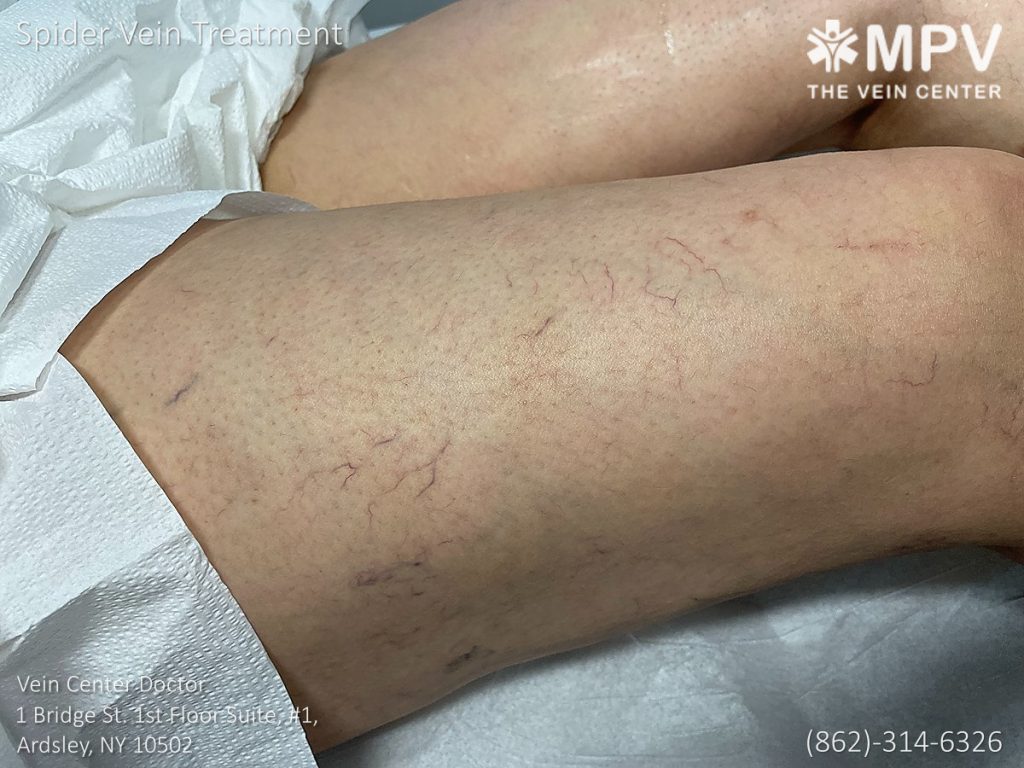
To summarize, while small and harmless, facial and leg spider veins can be an embarrassing cosmetic nuisance many want gone. However, attempting to poke or rupture them yourself with a needle is never a good idea and is not a legitimate form of treatment. At best, it will just cause temporary pain and bruising. At worst, scarring, infection, or serious vascular injury can occur.
Instead, properly consult an accredited vein expert or dermatologist about medically supervised procedures like sclerotherapy and laser therapy. These can eliminate spider veins safely and effectively when performed by a qualified professional, though multiple treatments are usually required for optimal results.
With patience and proper medical care, your spider veins can be removed or faded without risking the complications of amateur poking.
